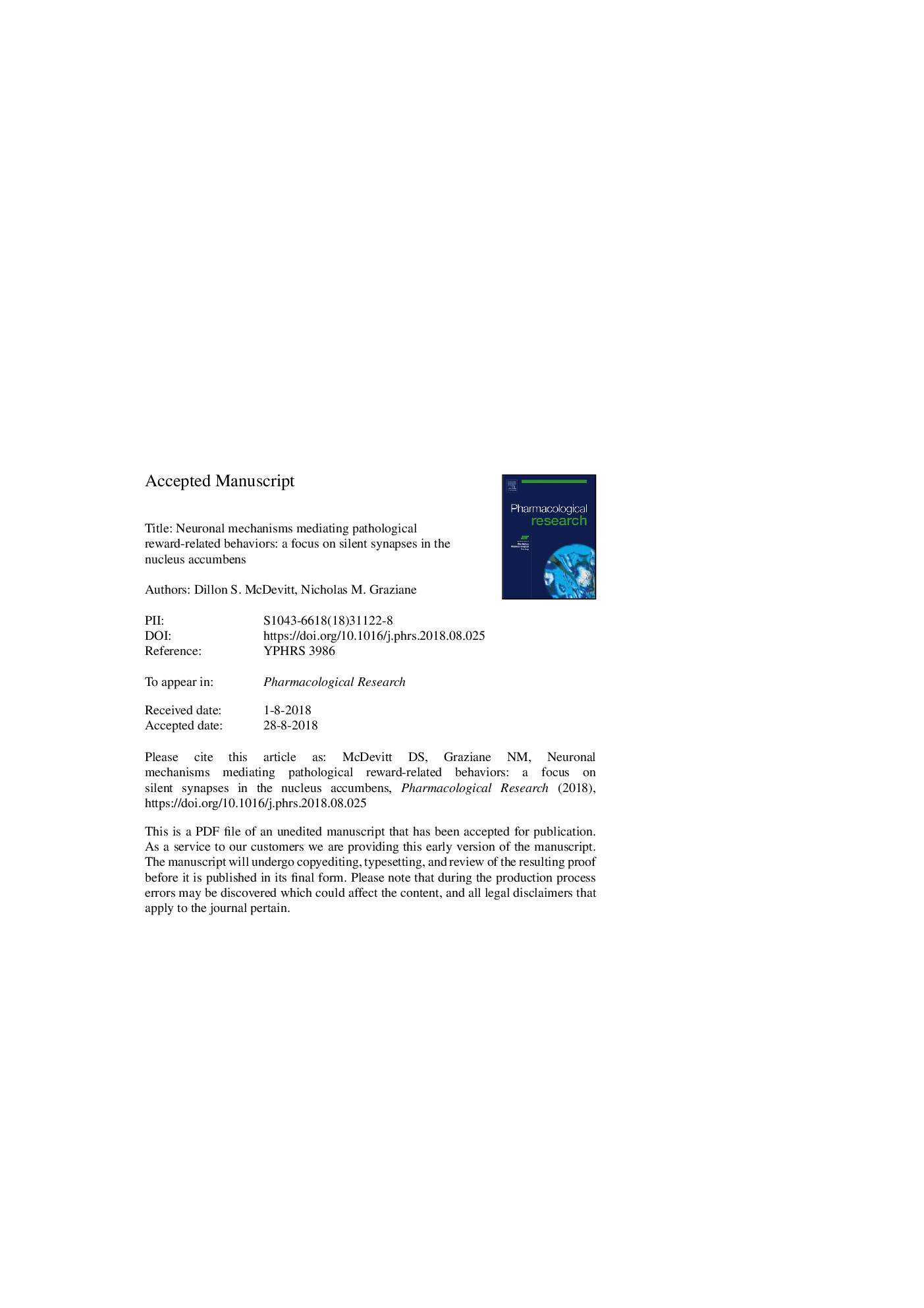| Article ID | Journal | Published Year | Pages | File Type |
|---|---|---|---|---|
| 10137678 | Pharmacological Research | 2018 | 25 Pages |
Abstract
The compulsive drive to seek drugs despite negative consequences relies heavily on drug-induced alterations that occur within the reward neurocircuit. These alterations include changes in neuromodulator and neurotransmitter systems that ultimately lock behaviors into an inflexible and permanent state. To provide clinicians with improved treatment options, researchers are trying to identify, as potential targets of therapeutic intervention, the neural mechanisms mediating an “addictive-like state”. Here, we discuss how drug-induced generation of silent synapses in the nucleus accumbens may be a potential therapeutic target capable of reversing drug-related behaviors.
Keywords
NMDARsILCEPSCsPrelimbic prefrontal cortexMSNsVTAα-amino-3-hydroxy-5-methyl-4-isoxazolepropionic acid receptorsCP-AMPARsNPYNACBLAPVTNAcShCPPCREBAMPARsbasolateral amygdalaVentral pallidumconditioned place preferenceexcitatory postsynaptic currentsdrug seekingSubstance abuseSilent synapsemorphineventral tegmental areaNAc Shellmedium spiny neuronsNucleus accumbensParaventricular nucleus of the thalamuscAMP response element-binding proteinCocainedopamine D1 receptorsN-Methyl-d-aspartate receptorsDopamine D2 receptorsNeuropeptide Y
Related Topics
Health Sciences
Pharmacology, Toxicology and Pharmaceutical Science
Pharmacology
Authors
Dillon S. McDevitt, Nicholas M. Graziane,
